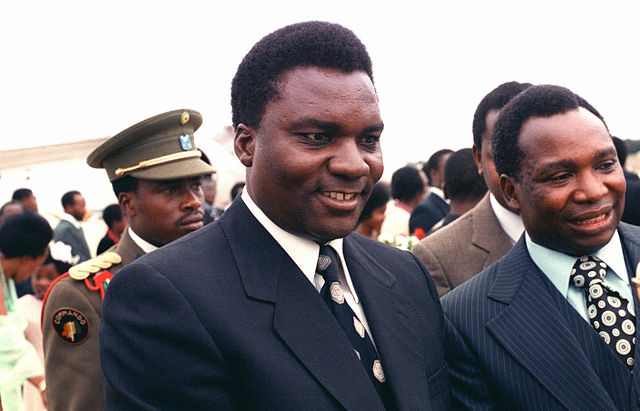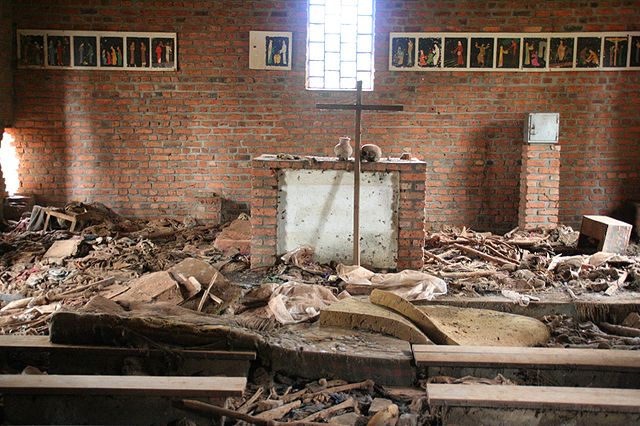Last updated on August 27th, 2019
The Rwandan genocide occurred in the context of the civil war, which had begun in 1990. The Hutu majority massacred the Tutsis over a 100-day period from April 7 to mid-July 1994. The total number of people killed during the conflict constituted up to 70 percent of the entire Tutsi population. The Rwandan Patriotic Front (RPF) managed to halt the killings when it took over the country. Paul Kagame who later became president of the country led the heavily armed rebels.
Some of the key Rwandan genocide facts include:
1. Causes
The reasons behind the genocide can be traced to the domination of Rwanda by the Tutsi minority. The Hutus who comprise 85 percent of the country managed to overthrow the Tutsi monarchy in 1959. As a result, thousands of Tutsis fled the country and settled in neighboring countries, such as Uganda. In April of 1994, President Juvenal Habyarimana (a Hutu) was killed in a plane crash and the Hutu extremists blamed the incident on the Rwandan Patriotic Front (RPF) (a rebel group formed by the Tutsi exiles).

2. Warring parties
The conflict pitted the Rwandan Patriotic Front (RPF) against the Hutu extremists and the Hutu-led government. Members of the core political elite actively planned the genocide while the perpetrators included government-backed militias, the Gendarmerie and the Rwandan army. Some of the militia groups involved in the atrocities were the Interahamwe and Impuzamugambi.
3. Timeline
The genocide started on April 7, 1994, a day after the then president Habyarimana died in a plane crash. Security forces backed by the militia began killing key Tutsi and moderate Hutu political and military leaders. The events escalated as checkpoints and barricades were set up around the country to identify and slaughter all people classified as Tutsi in their national identity cards. The killings continued for 100 days ending mid-July of 1994.
4. Effects of the genocide
The 1994 atrocities had a profound and lasting effect on the people of Rwanda and the neighboring countries. The depopulation and widespread destruction of infrastructure had a negative impact on the economy. This compelled the new government to strive for rapid economic development. The genocide directly contributed to two decades of conflict in the neighboring Democratic Republic of Congo (DRC) as many Hutu refugees escaped from Rwanda fearing revenge attacks after RPF military victory.
5. Victims
According to figures released by the United Nations, between 800,000 and 1 million Tutsis and moderate Hutus were massacred in Rwanda over a 100-day period.
An estimated 250,000 women were raped by the militias and security forces. Some of the victims were impregnated or infected with the HIV virus.

6. Global response to the genocide
The lack of a timely response to the horrific events in 1994 can be blamed for the scale of the Rwandan genocide. Organizations like the United Nations (UN), the African Union (AU) and several other countries, including Belgium and France failed to stop the killings. Belgium, France and the United Nations had troops in the country at the time of the genocide. The Americans were not prepared to send troops following the loss of US marines in Somalia a year earlier.
7. Preparation for genocide
The Rwandan security forces armed Hutu civilians with a wide variety of weapons, including machetes (a broad blade used either as an implement like an axe, or in combat like a short sword). Some youths were trained in combat as part of the civil defense program designed to deal with the threat posed by the RPF. Hutu extremists established a new radio station known as the RTLMC as an alternative to Radio Rwanda, which they accused of being too liberal and supportive of the opposition. The new station became a medium to incite hatred by broadcasting ethnic propaganda and it is blamed for contributing to 10 percent of the violence during the 1994 genocide.
8. Machete imports
Hutu extremists embarked on large-scale imports of machetes in 1993. The weapons were later distributed to civilians throughout the country as part of the civil defense network. The machetes brought into the country during that period exceeded the number of tools required for agricultural purposes.
9. Assassination of President Juvénal Habyarimana
The death of President Juvénal Habyarimana was initially blamed on both the Hutu extremists and the RPF. However, investigations later showed that a missile fired by Hutu extremists in the Rwandan army brought down the plane. The government and French investigators corroborated these findings. The incident sparked horrific violence over a period of 100 days.
Continue reading on the next page…
